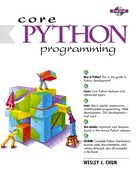8.6. break Statement
The break statement in Python terminates the current loop and resumes execution at the next statement, just like the traditional break found in C. The most common use for break is when some external condition is triggered (usually by testing with an if statement), requiring a hasty exit from a loop. The break statement can be used in both while and for loops.
count = num / 2 while count > 0: if (num % count == 0): print count, 'is the largest factor of', num break count = count - 1
The task of this piece of code is to find the largest divisor of a given number num. We iterate through all possible numbers that could possibly be factors of num, using the count variable and decrementing for every value that does NOT divide num. The first number that evenly divides num is the largest factor, and once that number is found, we no longer need to continue and use break to terminate the loop.
phone2remove = '555-1212' for eachPhone in phoneList: if eachPhone == phone2remove: print "found", phone2remove, '… deleting' deleteFromPhoneDB(phone2remove) break
The break statement here is used to interrupt the iteration of the list. The goal is to find a target element in the list, and, if found, to remove it from the database and break out of the loop.
